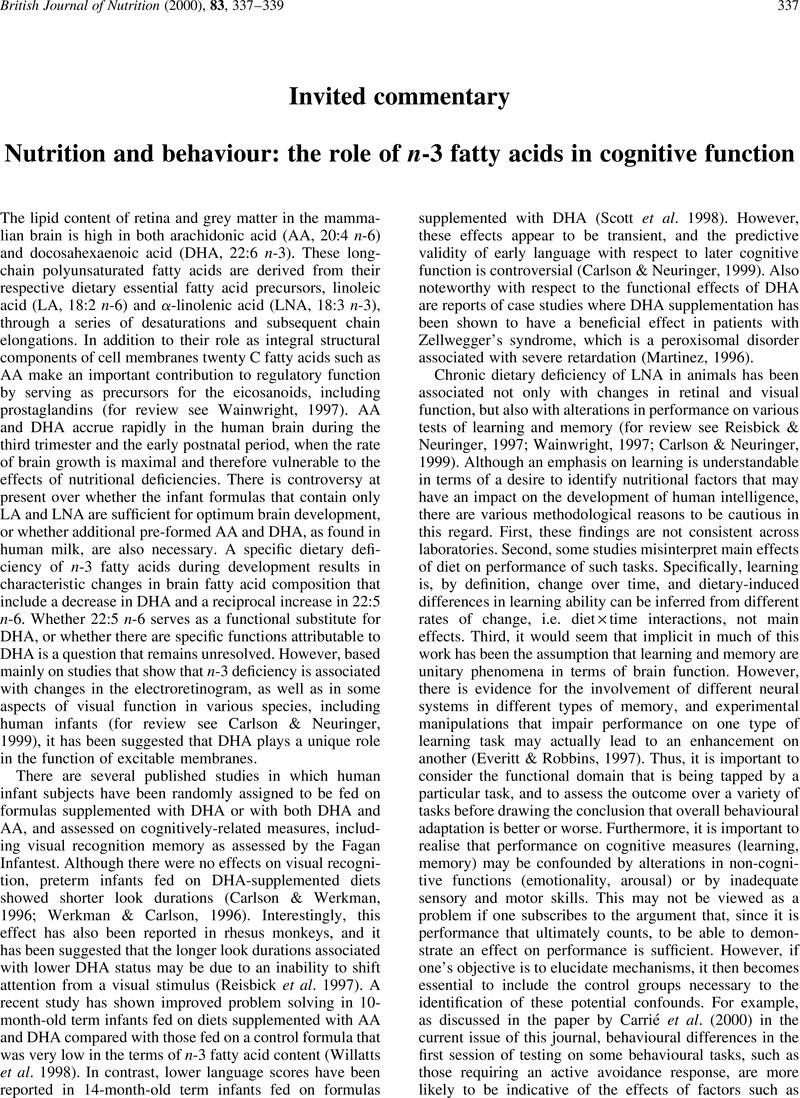Reisbick, S &
Neuringer, M (
1997) Omega-3 fatty acid deficiency and behavior: a critical review and future directions for research. In
Handbook of Essential Fatty Acid Biology: Biochemistry, Physiology and Behavioral Neurobiology, pp.
397–
426 [
Yehuda, S, and
Mostofsky, DI, editors].
Totowa, NJ:
Humana Press.
CrossRefGoogle Scholar 